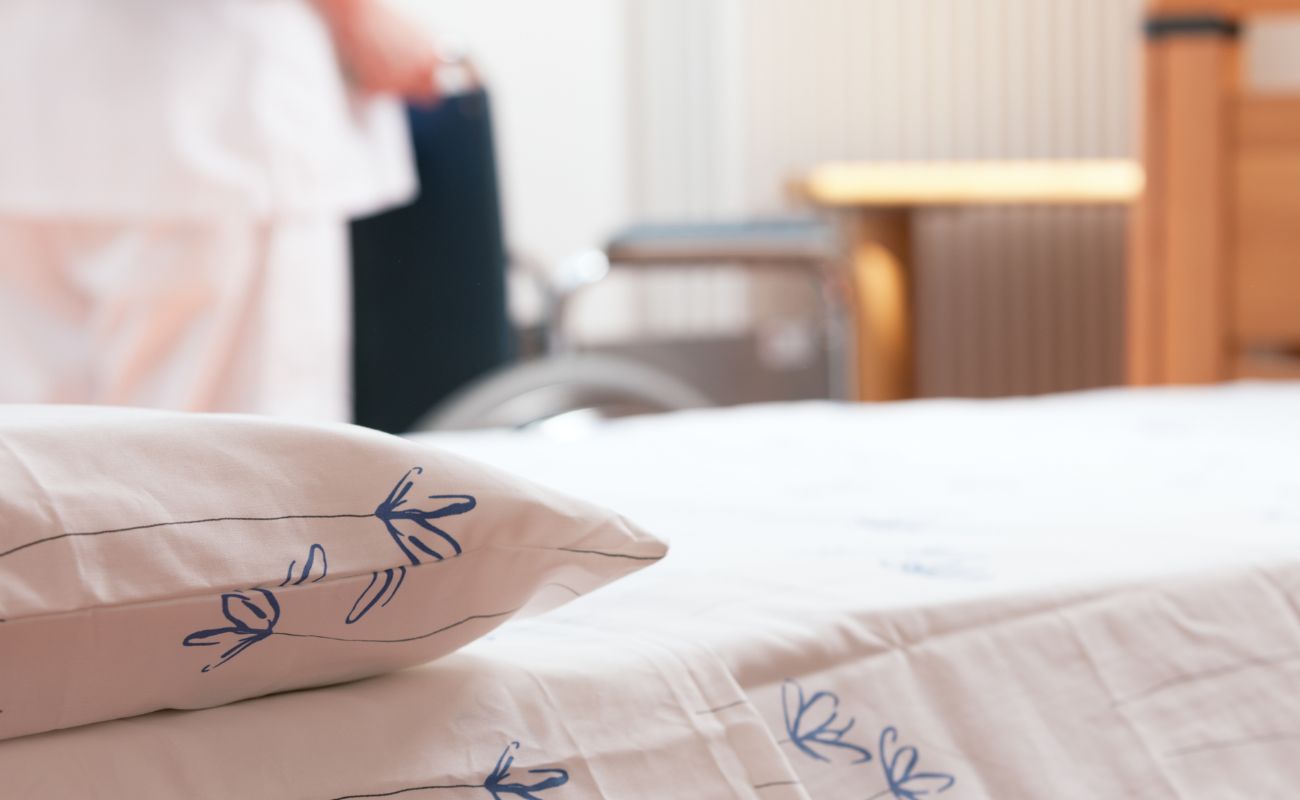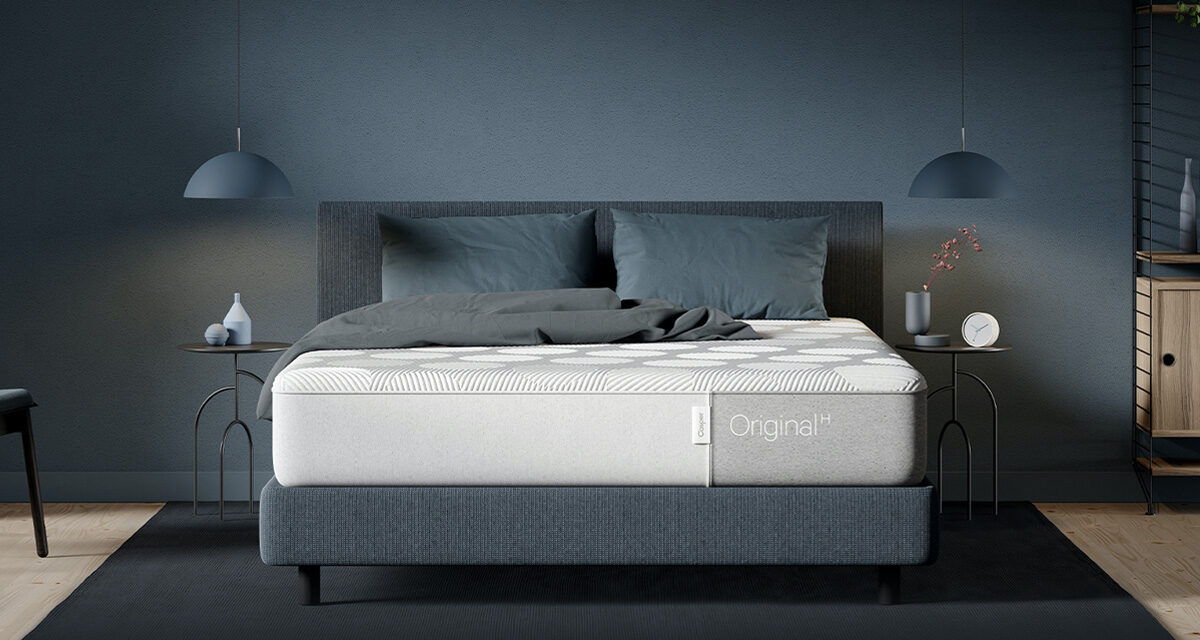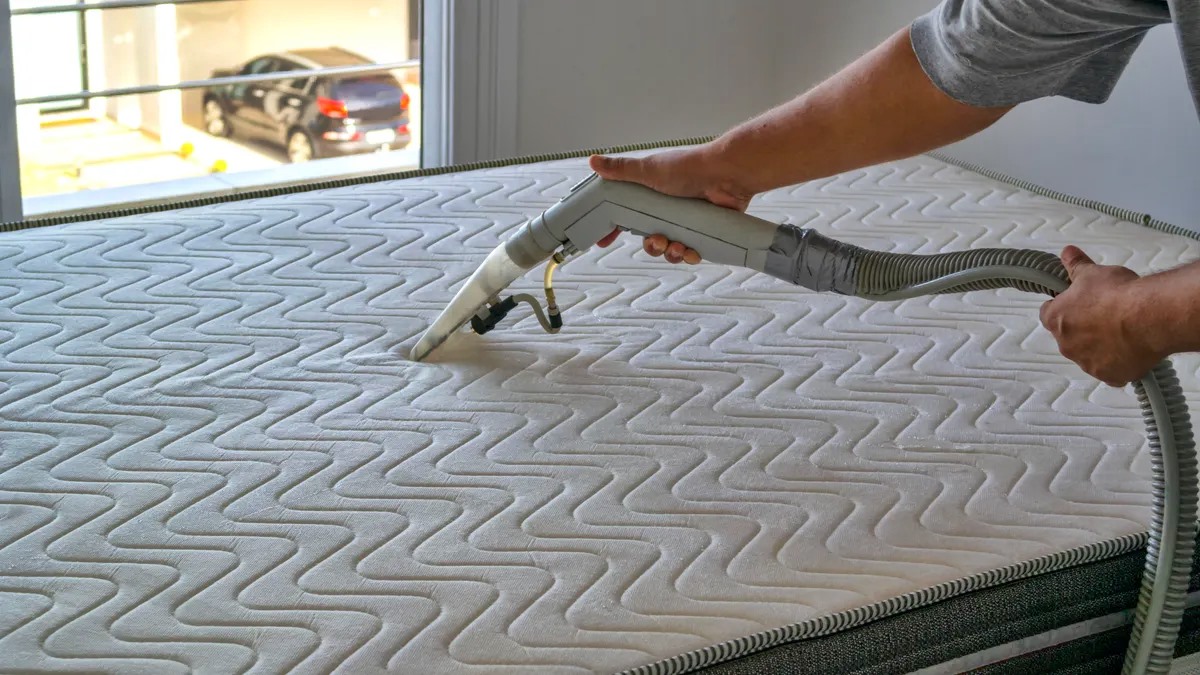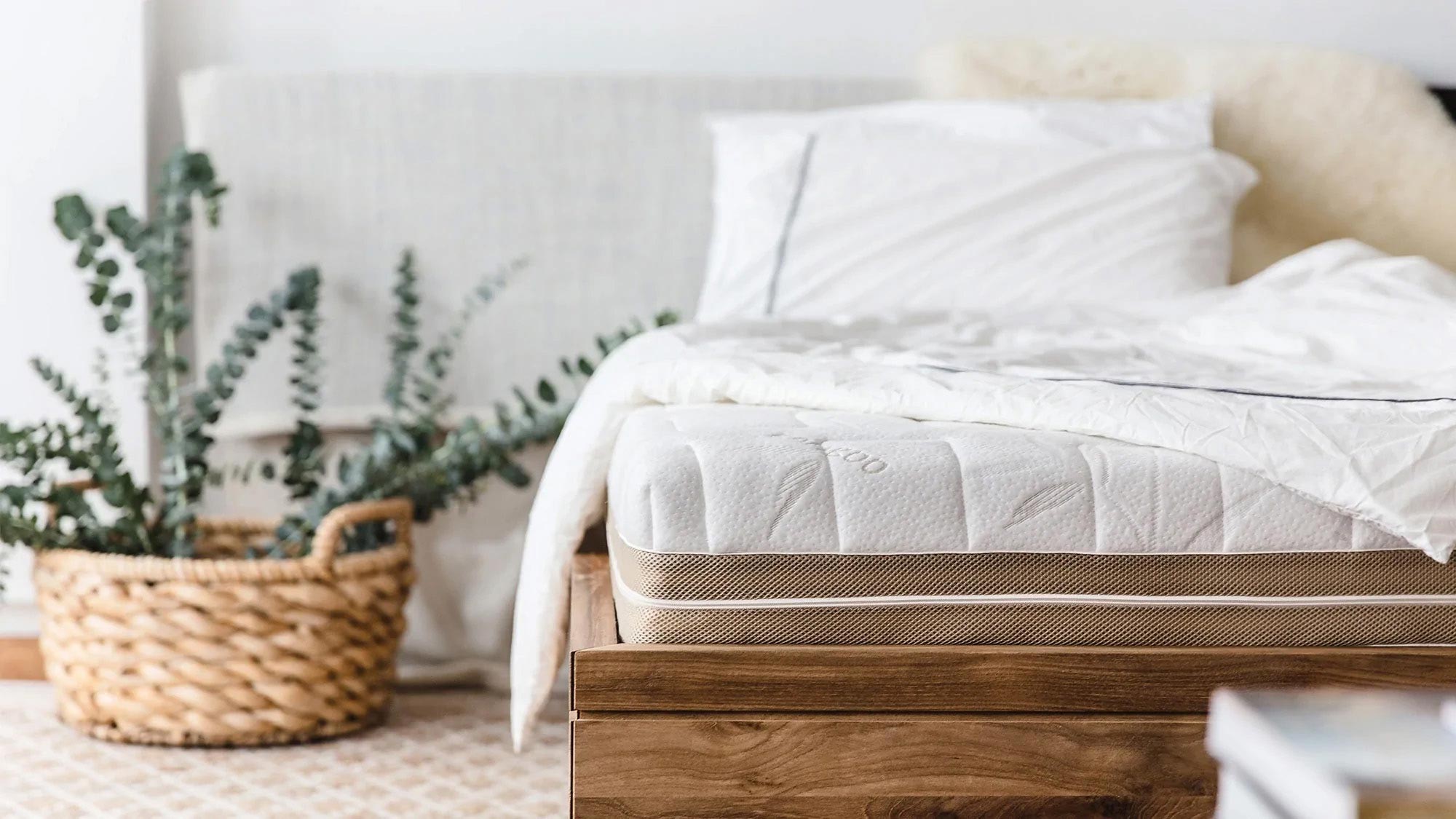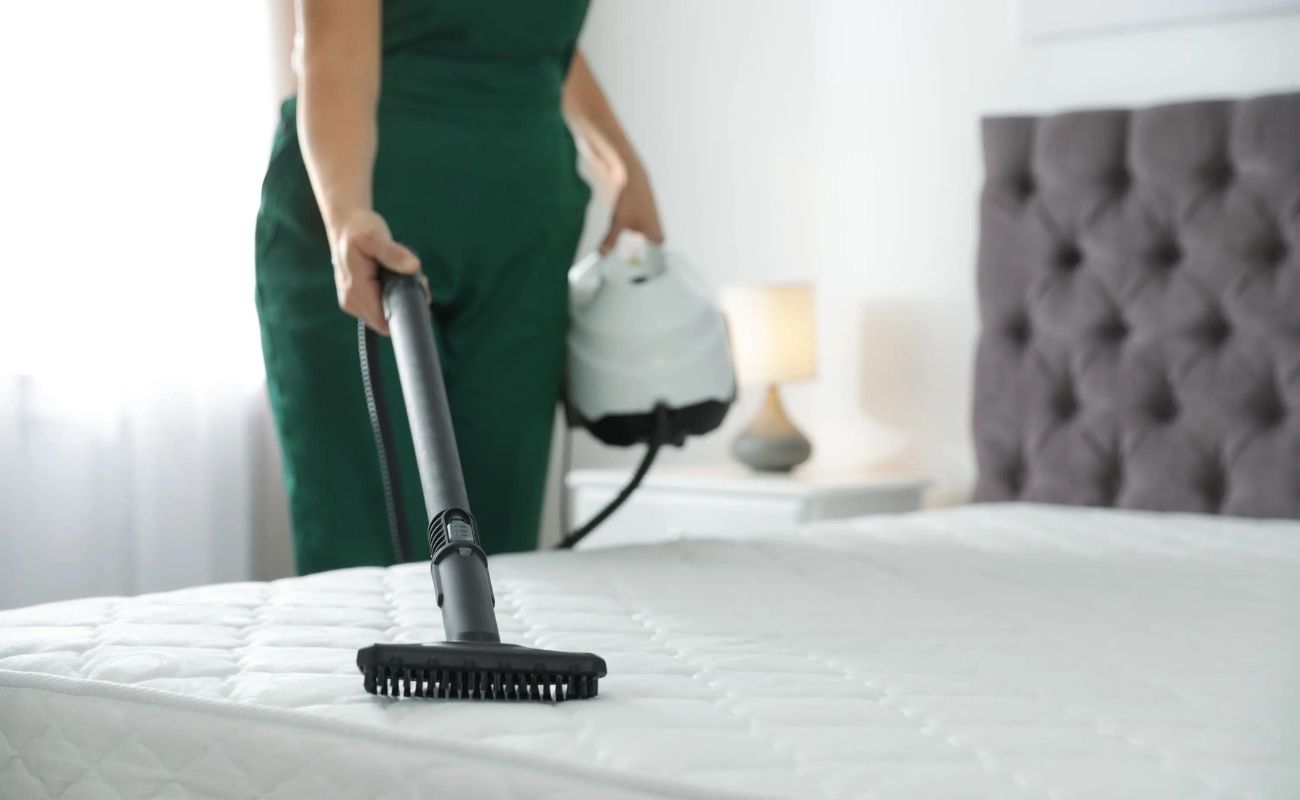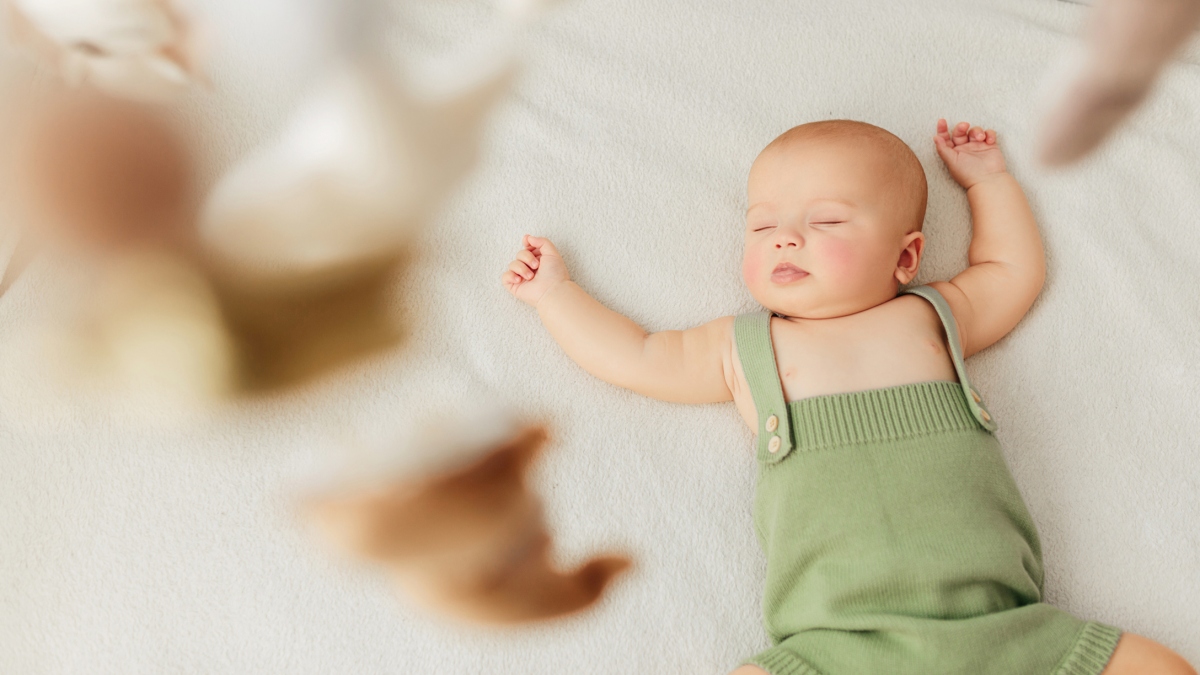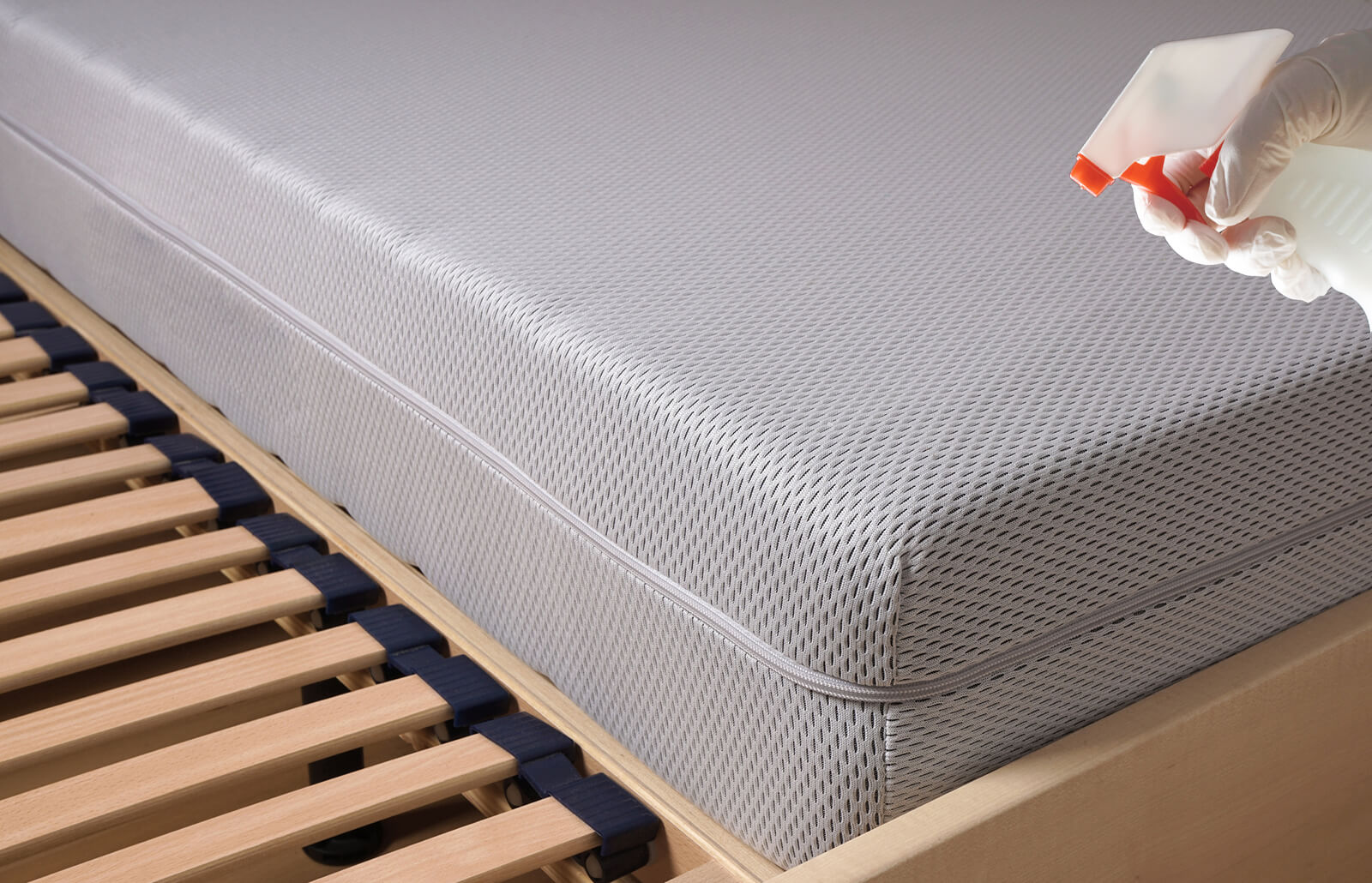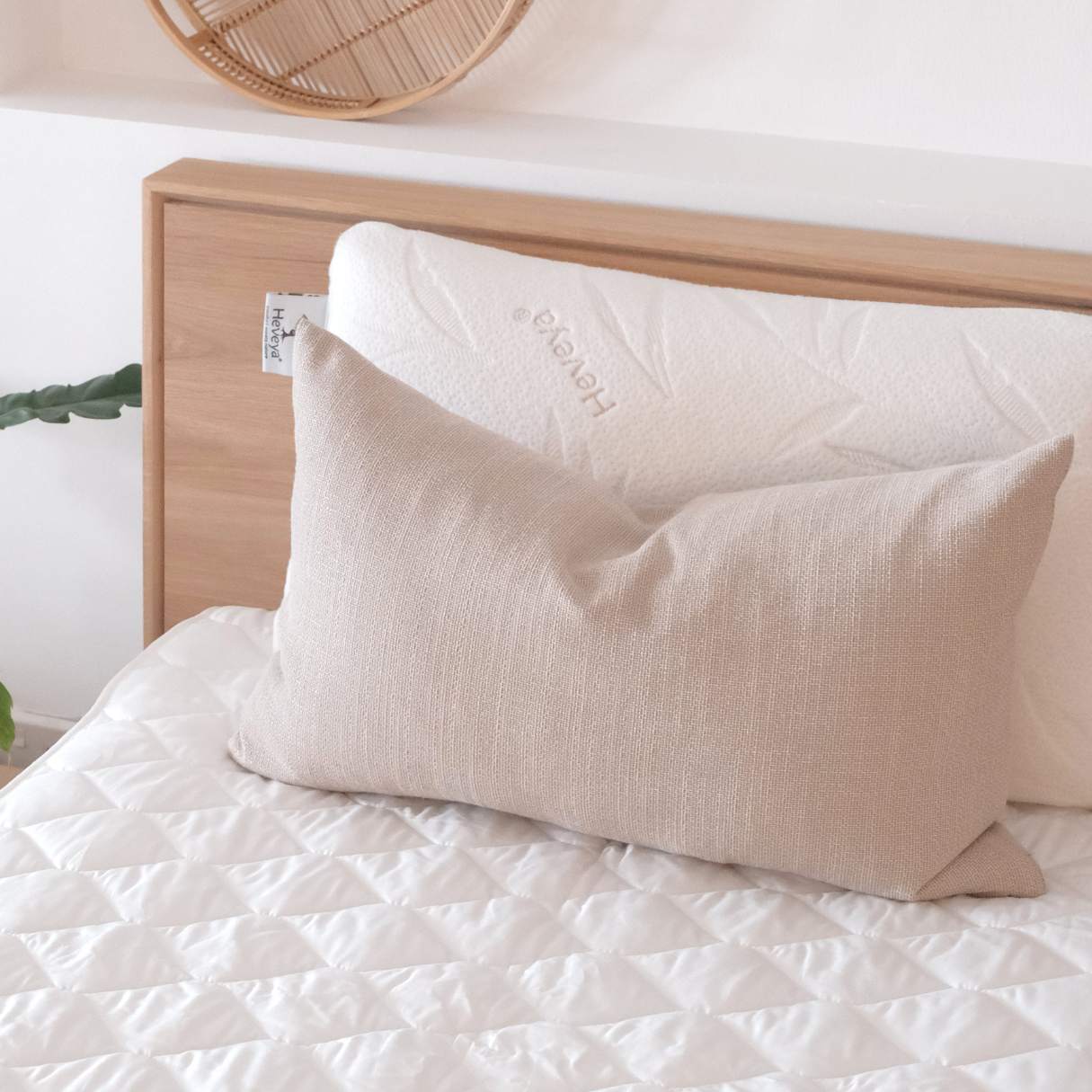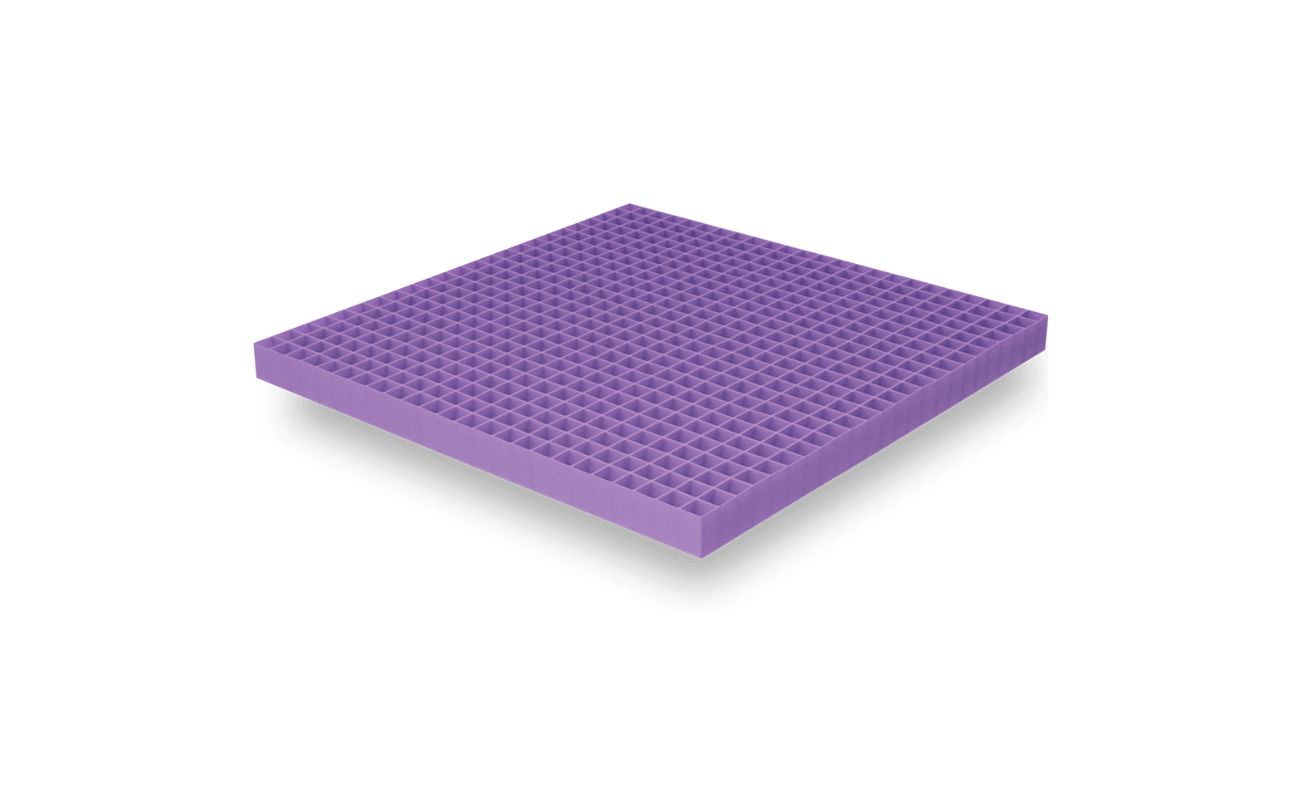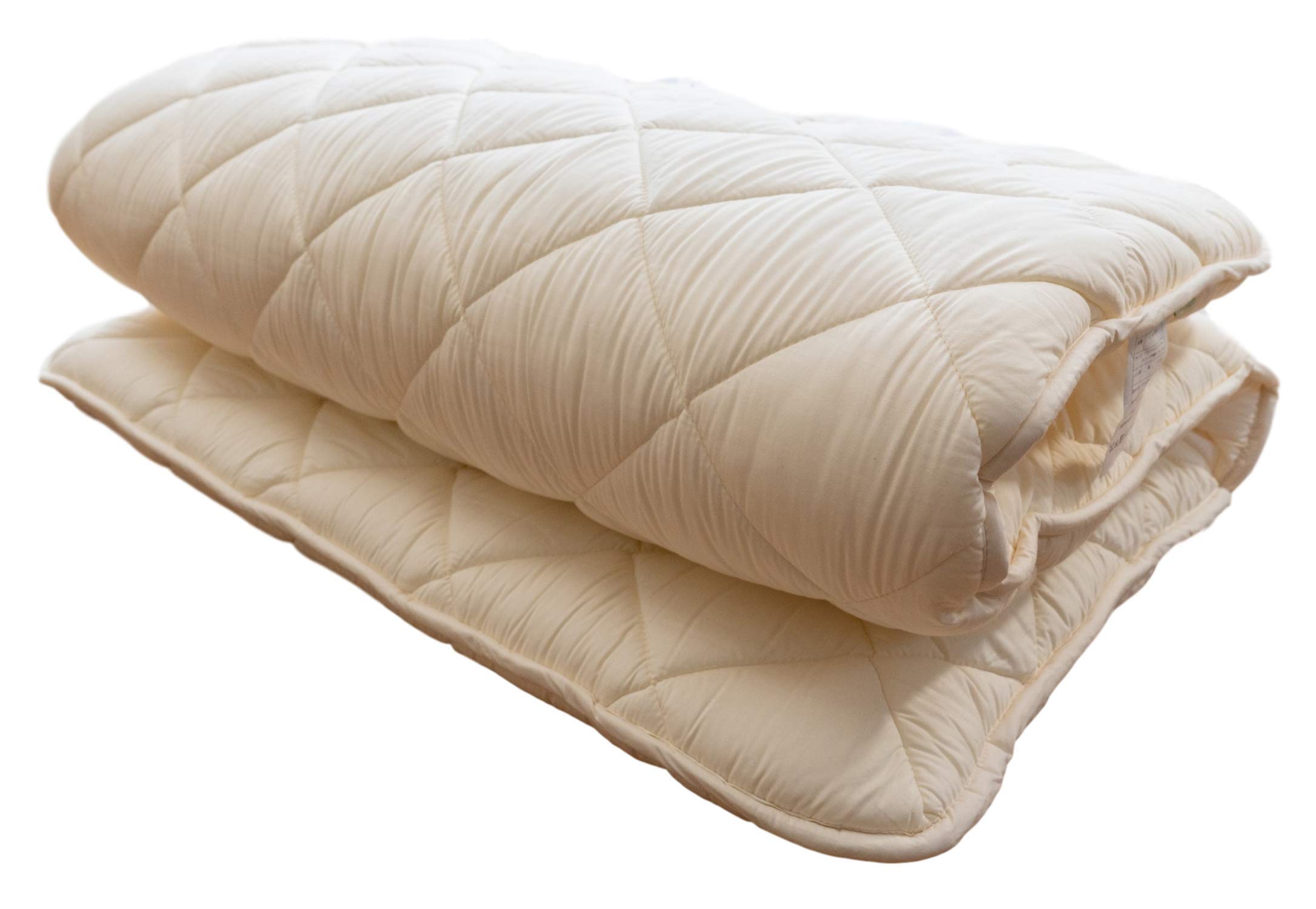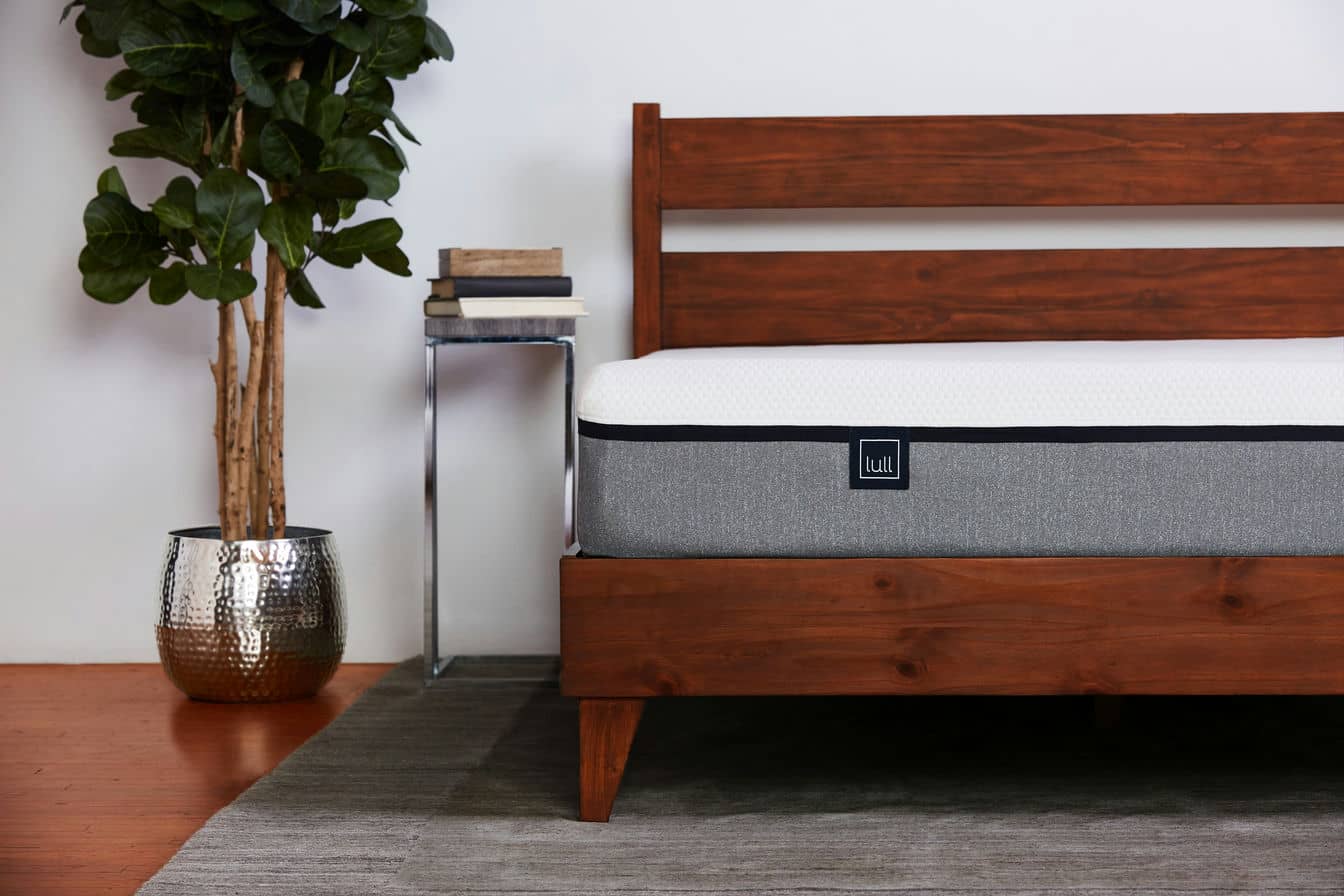Home>Furniture>Bedroom Furniture>How To Clean A Mattress After Pinworms
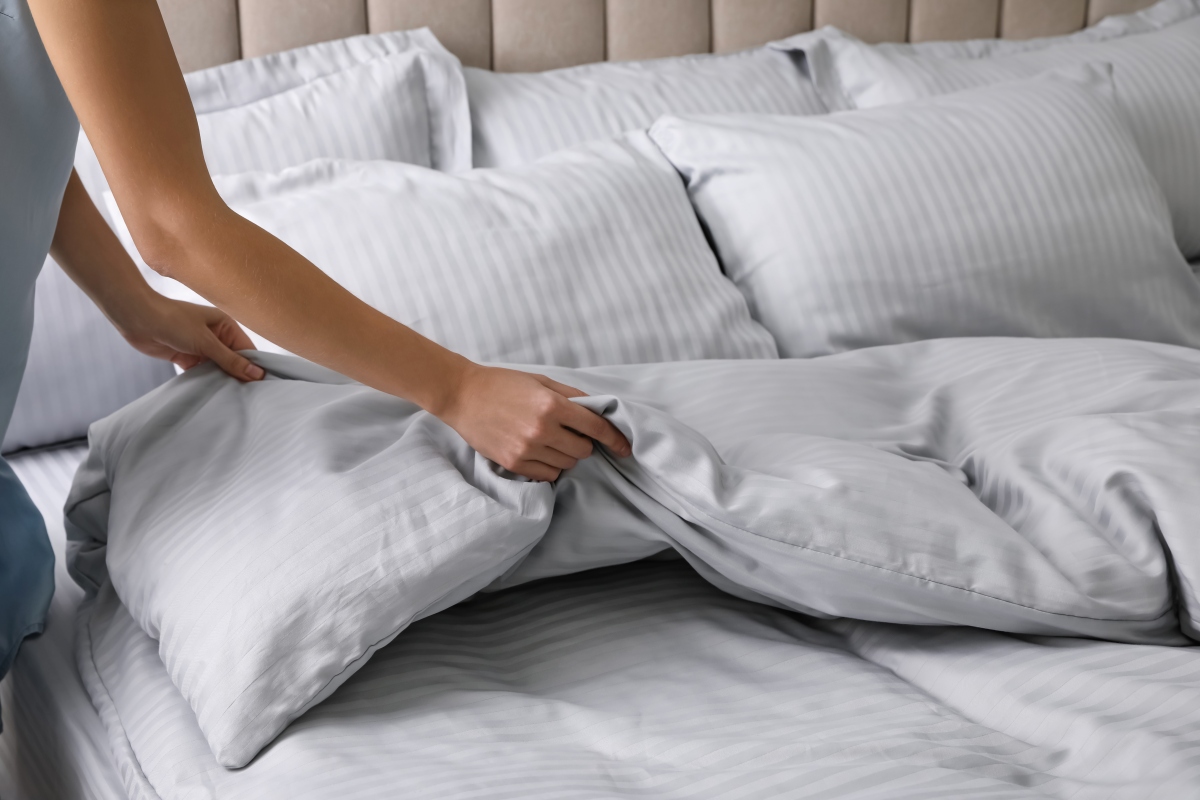

Bedroom Furniture
How To Clean A Mattress After Pinworms
Modified: March 6, 2024
Learn the best methods to effectively clean your mattress after a pinworm infestation, ensuring your bedroom furniture remains fresh and hygienic.
(Many of the links in this article redirect to a specific reviewed product. Your purchase of these products through affiliate links helps to generate commission for Storables.com, at no extra cost. Learn more)
Introduction
Welcome to our guide on how to clean a mattress after pinworms infestation. Dealing with pinworms can be a challenging and uncomfortable situation, but it’s important to address the issue promptly and thoroughly. Pinworms are a type of intestinal parasite that can reside in the human body and lay eggs, often causing itching and discomfort, especially at night. While treating the infection is crucial, it’s equally important to ensure that your mattress is properly cleaned and sanitized to prevent reinfestation.
When pinworms are present in your home, it’s highly likely that they could find their way onto your mattress, bedding, and other fabrics. The microscopic eggs can easily transfer from person to person or object to person, making it important to take necessary precautions to eliminate them entirely. Cleaning your mattress not only helps to remove any pinworm eggs or debris that may be present, but it also helps to eliminate any odor or staining that may have occurred.
In this article, we’ll guide you through the step-by-step process of cleaning your mattress after a pinworm infestation. We’ll also provide tips and recommendations to ensure that you eliminate all traces of pinworms and create a clean, healthy sleeping environment.
Before we begin, it’s important to note that this guide is intended for informational purposes only. If you suspect or have been diagnosed with a pinworm infection, it’s crucial to consult with a medical professional for appropriate treatment. Additionally, following proper hygiene practices, such as regular hand washing and keeping the home clean, can help prevent the spread of pinworms.
Now, let’s delve into the steps you need to follow to thoroughly clean your mattress after dealing with a pinworm infestation.
Key Takeaways:
- Cleaning a mattress after pinworms involves isolating the affected person, wearing protective gear, and using specific supplies to remove eggs and odors. Thorough cleaning and regular hygiene practices are essential for a healthy sleeping environment.
- After cleaning, applying a mattress protector, laundering bedding, and following additional tips can prevent reinfestation and maintain a clean, safe space for restful sleep. Regular vacuuming and good hygiene practices are key for long-term cleanliness.
Read more: How To Clean A Mattress After Covid
Understanding Pinworms and Mattress Contamination
Pinworms, scientifically known as Enterobius vermicularis, are small parasites that commonly infect humans, especially children. They are transmitted through the ingestion or inhalation of pinworm eggs, which can be found in contaminated food, water, or surfaces. Once inside the body, the pinworms reside in the intestines, where they lay eggs. These eggs are then passed out of the body through bowel movements, and this is where the risk of mattress contamination arises.
Pinworm eggs are incredibly small and can easily become airborne or settle on surfaces, including mattresses. When an infected individual sleeps in their bed, some of these eggs can transfer onto the mattress. Over time, these eggs can hatch into pinworm larvae, leading to reinfestation if not properly addressed.
Mattress contamination is a serious concern because pinworms can survive for up to two weeks outside the human body. This means that even if an infected individual receives appropriate treatment, they can potentially become reinfected if the mattress is not thoroughly cleaned. Additionally, pinworm eggs can be resilient and resistant to standard cleaning methods, so special attention is needed when dealing with mattress cleaning after pinworms.
It’s essential to be aware of the signs of pinworm infestation, which include intense itching around the anus or vaginal area, especially at night. The itching is caused by the female pinworms migrating to the perianal region to lay their eggs. It’s important to seek medical attention for proper diagnosis and treatment. Once the infection is confirmed, taking prompt action to clean and sanitize your mattress is crucial to prevent reinfestation and ensure a healthy sleeping environment.
Now that we understand the risk of mattress contamination and the impact of pinworm infestation, let’s move on to the precautions you need to take before starting the cleaning process.
Precautions before Cleaning
Before diving into the mattress cleaning process after pinworm infestation, it’s important to take a few precautions to protect yourself and prevent the spread of pinworms. Here are some essential steps to follow:
- Isolate the affected individual: If you or someone in your household has been diagnosed with pinworms, it’s crucial to isolate them from others to prevent further contamination. Ensure that they have their own dedicated bedding and avoid sharing items that come into contact with the affected individual, such as pillows or stuffed animals. This helps contain the pinworms and reduce the risk of reinfestation.
- Wear protective gear: When cleaning the mattress, ensure that you wear disposable gloves to prevent direct contact with any potential pinworm eggs or debris. This helps maintain personal hygiene and reduces the risk of spreading pinworms to other surfaces.
- Avoid shaking or flipping the mattress: Pinworm eggs can become airborne and easily spread throughout the room if the mattress is vigorously shaken or flipped. To minimize the risk of cross-contamination, it’s best to avoid these actions until the mattress has been thoroughly cleaned and sanitized.
- Choose a well-ventilated area: Cleaning a mattress after pinworm infestation may involve the use of cleaning agents or disinfectants that can emit fumes. Select a well-ventilated area or open windows to ensure proper airflow while cleaning. This helps to minimize exposure to potentially harmful substances and create a more comfortable working environment.
- Follow proper disposal methods: After cleaning, it’s important to dispose of any materials that came into direct contact with the pinworm-infested mattress, such as gloves or cleaning cloths. Use sealable plastic bags to contain them securely and dispose of them in an appropriate manner. This step helps prevent the spread of pinworms to other surfaces or individuals.
By following these precautions, you can minimize the risk of reinfestation and ensure a thorough and safe cleaning process. Now that you’ve taken the necessary steps, let’s move on to the first step in cleaning your mattress after pinworms – gathering the necessary supplies.
Step 1: Gather Necessary Supplies
Before you begin the mattress cleaning process after pinworm infestation, it’s essential to gather all the necessary supplies. Having everything on hand will help streamline the process and ensure that you have everything you need to effectively clean and sanitize your mattress. Here are the supplies you’ll need:
- Vacuum cleaner with upholstery attachment: A vacuum cleaner is a crucial tool for removing any loose debris, dust, or pinworm eggs that may be on the surface of your mattress. Make sure it has an upholstery attachment, as this will aid in thorough cleaning.
- Hot water and mild detergent: Hot water combined with a mild detergent is effective in breaking down any stains or odors on the mattress surface. Choose a detergent that is gentle and free of harsh chemicals.
- White vinegar: White vinegar is a natural disinfectant and can help eliminate any remaining odors on the mattress. It also helps in breaking down any remaining stains.
- Baking soda: Baking soda is an excellent natural deodorizer. It helps neutralize any unpleasant odors and can also assist in removing stains.
- Microfiber cloths or sponge: These are necessary for applying cleaning solutions, spot-treating stains, and wiping the mattress surface.
- Plastic mattress protector: A plastic mattress protector acts as a barrier between your mattress and any potential contaminants, preventing the penetration of pinworm eggs or debris. Choose a waterproof and hypoallergenic protector for maximum protection.
- Sealable plastic bags: These bags are useful for containing any materials that have come into direct contact with the pinworm-infected mattress. It helps in proper disposal to prevent the spread of pinworms to other surfaces or individuals.
- Disposable gloves: Disposable gloves are essential to protect your hands from direct contact with potential pinworm eggs or debris.
Make sure you have all these supplies readily available before starting the cleaning process. By having everything prepared, you’ll be able to proceed smoothly to the next step – stripping the bedding.
Step 2: Strip the Bedding
Once you have gathered all the necessary supplies, it’s time to strip the bedding from the mattress. Remove all the sheets, pillowcases, mattress pads, and any other fabrics that are in direct contact with the mattress. Place them directly into a laundry bag or basket to prevent any potential pinworm eggs from spreading to other surfaces.
If possible, it’s recommended to wash the bedding and other fabrics in hot water to help kill any pinworms or eggs that may be present. Add a mild detergent to the wash cycle to thoroughly clean and disinfect the fabric. After washing, dry the fabrics on the highest heat setting, if applicable, as heat can help eliminate any remaining pinworm remnants.
While the bedding is being laundered, you can move on to the next step of the mattress cleaning process – vacuuming.
Note: It’s important to continue practicing good hygiene habits during this process. Remember to wash your hands thoroughly after handling the bedding or coming into contact with the mattress.
Now that the bedding has been stripped and safely removed, let’s move on to the next step – vacuuming the mattress.
Read more: How To Clean Mattress After Bed Wetting
Step 3: Vacuum the Mattress
Now that the bedding has been stripped and removed, it’s time to thoroughly vacuum the mattress. Vacuuming is crucial as it helps to remove any loose debris, dust, or pinworm eggs that may be present on the surface of the mattress.
Start by attaching the upholstery attachment to your vacuum cleaner. This attachment is specifically designed for cleaning fabric surfaces like mattresses. Ensure that the vacuum is set to a medium or low suction setting to prevent any damage to the mattress.
Begin vacuuming the entire surface of the mattress, paying close attention to seams, creases, and corners where debris and pinworm eggs may accumulate. Use slow, overlapping strokes to ensure you cover the entire area. Don’t forget to vacuum both sides of the mattress if possible, as pinworm eggs can be present on both surfaces.
When vacuuming, make sure to press the attachment firmly against the mattress to maximize suction. This will help to effectively remove any embedded dirt or debris. Take your time and be thorough in your vacuuming to ensure the best possible cleaning results.
Once you have finished vacuuming the entire mattress, carefully empty the vacuum bag or canister into a sealable plastic bag. This will prevent any potential pinworm eggs or debris from escaping and spreading to other surfaces. Seal the bag tightly and dispose of it in an appropriate manner.
Vacuuming is an important step to remove surface contaminants and prepare the mattress for deeper cleaning. Next, we’ll move on to step 4 – spot treating any stains on the mattress.
After treating pinworms, vacuum the mattress thoroughly and then use a mattress spray or a mixture of water and vinegar to clean and disinfect the surface. Wash all bedding and linens in hot water.
Step 4: Spot Treat Stains
After vacuuming the mattress, it’s time to move on to spot treating any stains that may be present. Stains on the mattress can be unsightly and may harbor bacteria or odors, so it’s important to address them during the cleaning process.
Before applying any cleaning solution, it’s essential to check the manufacturer’s instructions or care label on your mattress. Some mattresses may have specific cleaning guidelines or restrictions, so it’s important to follow them to avoid damaging the mattress.
If there are no specific restrictions, you can create a homemade stain remover by mixing a small amount of mild detergent with warm water. Dip a microfiber cloth or sponge into the solution and gently blot the stained area. Avoid rubbing the stain, as this can push it deeper into the mattress fibers.
If the stain persists, you can try using a mixture of white vinegar and water in a 1:1 ratio as an alternative. Apply the solution to the stain and blot it gently. Vinegar is a natural disinfectant and can help break down stubborn stains.
After treating the stains, use a clean, damp cloth or sponge to rinse the area with plain water. Blot the area again to remove any excess moisture. Avoid over-saturating the mattress, as this can lead to mold or mildew growth.
Once you have finished spot treating the stains, allow the mattress to air dry completely. You can open windows or use a fan to aid in the drying process. It’s important to ensure that the mattress is completely dry before proceeding to the next step.
Spot treating stains helps to remove any visible marks and freshen up the appearance of the mattress. Now that the stains have been addressed, let’s move on to step 5 – deodorizing the mattress.
Step 5: Deodorize the Mattress
Deodorizing the mattress is an important step to eliminate any lingering odors that may be present after cleaning and treating stains. This step helps to freshen up the mattress and create a more pleasant sleeping environment. Here are some effective methods to deodorize your mattress:
- Baking Soda: Baking soda is a natural deodorizer and is excellent at absorbing odors. Sprinkle a generous amount of baking soda over the entire surface of the mattress. Use a clean brush or your hands to gently spread and rub the baking soda into the fabric. Allow the baking soda to sit on the mattress for at least a couple of hours, or ideally overnight, to give it enough time to absorb any odors. Afterward, thoroughly vacuum the baking soda from the mattress using the upholstery attachment.
- Essential Oils: Essential oils not only add a pleasant scent to your mattress but also have natural antibacterial properties. Choose your favorite essential oil, such as lavender or tea tree oil, and dilute a few drops in water. Transfer the mixture to a spray bottle and mist the mattress lightly. Allow the mattress to air dry completely before putting the bedding back on.
- Steam Cleaning: If you have access to a steam cleaner, it can be a highly effective method for deodorizing your mattress. The high temperature of the steam helps kill bacteria and odor-causing organisms. Simply follow the manufacturer’s instructions for using the steam cleaner on fabric surfaces, and ensure that the mattress is fully dry before placing any bedding on it.
Deodorizing your mattress helps to eliminate any residual odors and leaves it smelling fresh and clean. Once you have deodorized the mattress, it’s time to move on to step 6 – applying a mattress protector for added protection.
Step 6: Apply a Mattress Protector
Now that you have thoroughly cleaned, treated stains, and deodorized your mattress, it’s time to add an extra layer of protection by applying a mattress protector. A mattress protector acts as a barrier between your mattress and potential contaminants, such as pinworm eggs, dirt, and spills. It not only helps to keep your mattress cleaner but also extends its lifespan. Follow these steps to apply a mattress protector:
- Select a Mattress Protector: Choose a mattress protector that fits your mattress size. Look for a waterproof and hypoallergenic option to provide the best protection against pinworm eggs and allergens. Make sure the protector is breathable to maintain a comfortable sleep environment.
- Prepare the Mattress: Ensure that the mattress is completely dry before applying the protector. Smooth out any wrinkles or creases on the mattress surface for a better fit.
- Unfold the Protector: Unpack the mattress protector and unfold it. Align it with the top edge of the mattress, making sure that it covers the entire surface area.
- Tuck in the Sides: Starting from one end, tuck the sides of the mattress protector under the mattress. Work your way around the mattress, tucking in the corners and edges securely. Ensure a snug fit to prevent the protector from shifting or bunching up during sleep.
- Smooth it Out: Once the protector is in place, smooth out any wrinkles or folds. Ensure that it lies flat and evenly covers the mattress surface.
A mattress protector provides an added layer of defense against pinworm contamination, spills, and allergens. It also makes future cleaning and maintenance easier. After applying the mattress protector, you can move on to step 7 – laundering bedding and other fabrics.
Read more: How To Clean A Mattress After Bed Wetting
Step 7: Launder Bedding and Other Fabrics
With the mattress now protected by a mattress protector, it’s time to focus on laundering the bedding and other fabrics that were removed earlier. Washing these items is an essential step to eliminate any remaining pinworm eggs or debris and maintain a clean sleeping environment. Follow these steps to properly launder your bedding and fabrics:
- Separate and Sort: Sort the bedding and other fabrics into separate piles based on color and fabric type. This helps prevent color bleeding and ensures that each item gets the appropriate washing treatment.
- Read Labels: Check the care labels on each item for specific washing instructions. Follow the recommended water temperature, detergent amount, and any other special considerations listed.
- Hot Water Wash: Select the highest appropriate water temperature for washing, as hot water helps kill any remaining pinworm eggs or bacteria. Add a mild detergent to the wash cycle and start the machine.
- Dry Thoroughly: After washing, dry the bedding and fabrics on the highest heat setting recommended for each item. If possible, use a dryer rather than air drying, as heat helps eliminate any remaining pinworm remnants. Ensure that the items are completely dry before folding and storing them or placing them back on the bed.
- Iron or Steam: As an optional step, you can iron or steam the bedding and fabrics to further sanitize and remove any wrinkles.
By laundering your bedding and other fabrics, you ensure that any potential pinworm eggs or debris are eliminated, leaving you with clean and fresh items. Once they are laundered and dried, you can put them back on the bed and enjoy a hygienic and comfortable sleeping environment.
With the bedding and fabrics taken care of, you have successfully completed all the necessary steps to clean a mattress after a pinworm infestation. However, there are a few additional tips and considerations to keep in mind, which we’ll discuss next.
Additional Tips and Considerations
While you have completed the main steps to clean and sanitize your mattress after a pinworm infestation, here are some additional tips and considerations to ensure thorough and effective cleaning:
- Repeat the cleaning process if necessary: If you notice any persistent stains or lingering odors after the initial cleaning, it may be necessary to repeat certain steps or try alternative cleaning methods.
- Regularly vacuum your mattress: Even after you have thoroughly cleaned your mattress, it’s important to incorporate regular vacuuming as part of your cleaning routine. This helps to remove dust, allergens, and any loose debris that may accumulate over time.
- Protect your mattress from future infestations: To prevent future pinworm infestations, emphasize good hygiene practices such as washing hands regularly, maintaining clean living spaces, and practicing proper toilet hygiene.
- Consider professional cleaning: If you have a particularly stubborn stain or if you feel that your mattress requires a deeper cleaning, you might want to consider hiring professional mattress cleaning services. They have specialized equipment and expertise to thoroughly clean and sanitize your mattress.
- Monitor for signs of reinfestation: Keep an eye out for any recurring symptoms of pinworms, such as itching around the anus or vaginal area, especially at night. If you suspect or observe any signs, it’s important to seek medical attention promptly.
- Follow proper hygiene practices: In addition to cleaning your mattress, encourage regular handwashing, practicing good personal hygiene, and maintaining cleanliness in your living environment to prevent the spread of pinworms.
By following these tips and considerations, you can maintain a clean and healthy sleeping environment for you and your family. Regular cleaning and good hygiene practices help eliminate potential contaminants and create a safe space for a restful night’s sleep.
As a final reminder, it’s important to consult with a medical professional for proper diagnosis, treatment, and guidance if you suspect or have been diagnosed with a pinworm infestation. They can provide appropriate medical advice and treatment options based on your specific situation.
We hope this guide has been helpful in guiding you through the process of cleaning your mattress after a pinworm infestation. By following these steps and implementing proper hygiene practices, you can create a clean and comfortable sleeping environment in your home.
Conclusion
Cleaning a mattress after a pinworm infestation is an important step to eliminate any lingering pinworm eggs, debris, stains, and odors. By following the steps outlined in this guide and taking necessary precautions, you can ensure a thorough and effective cleaning process.
Understanding pinworms and how they can contaminate your mattress is crucial in addressing the issue. By being aware of the signs of pinworm infestation and taking appropriate measures, such as isolating the affected individual and wearing protective gear, you can prevent further contamination and spread of the parasites.
Gathering the necessary supplies and thoroughly vacuuming the mattress are essential in removing loose debris, dust, and pinworm eggs. Spot treating stains and deodorizing the mattress help restore its appearance and freshness. Applying a mattress protector adds an extra layer of protection, preventing future contamination and extending the life of your mattress.
Finally, laundering all bedding and fabrics associated with the mattress ensures the complete elimination of pinworm eggs and contaminants. Incorporating regular cleaning and proper hygiene practices will help maintain a clean and healthy sleeping environment.
Remember, if you suspect or have been diagnosed with a pinworm infestation, it’s crucial to consult with a medical professional for proper diagnosis, treatment, and guidance.
By following the steps outlined in this guide and implementing the additional tips and considerations, you can effectively clean your mattress after a pinworm infestation and create a hygienic, comfortable, and safe sleeping environment for you and your loved ones.
Rest well and sleep tight!
Frequently Asked Questions about How To Clean A Mattress After Pinworms
Was this page helpful?
At Storables.com, we guarantee accurate and reliable information. Our content, validated by Expert Board Contributors, is crafted following stringent Editorial Policies. We're committed to providing you with well-researched, expert-backed insights for all your informational needs.

